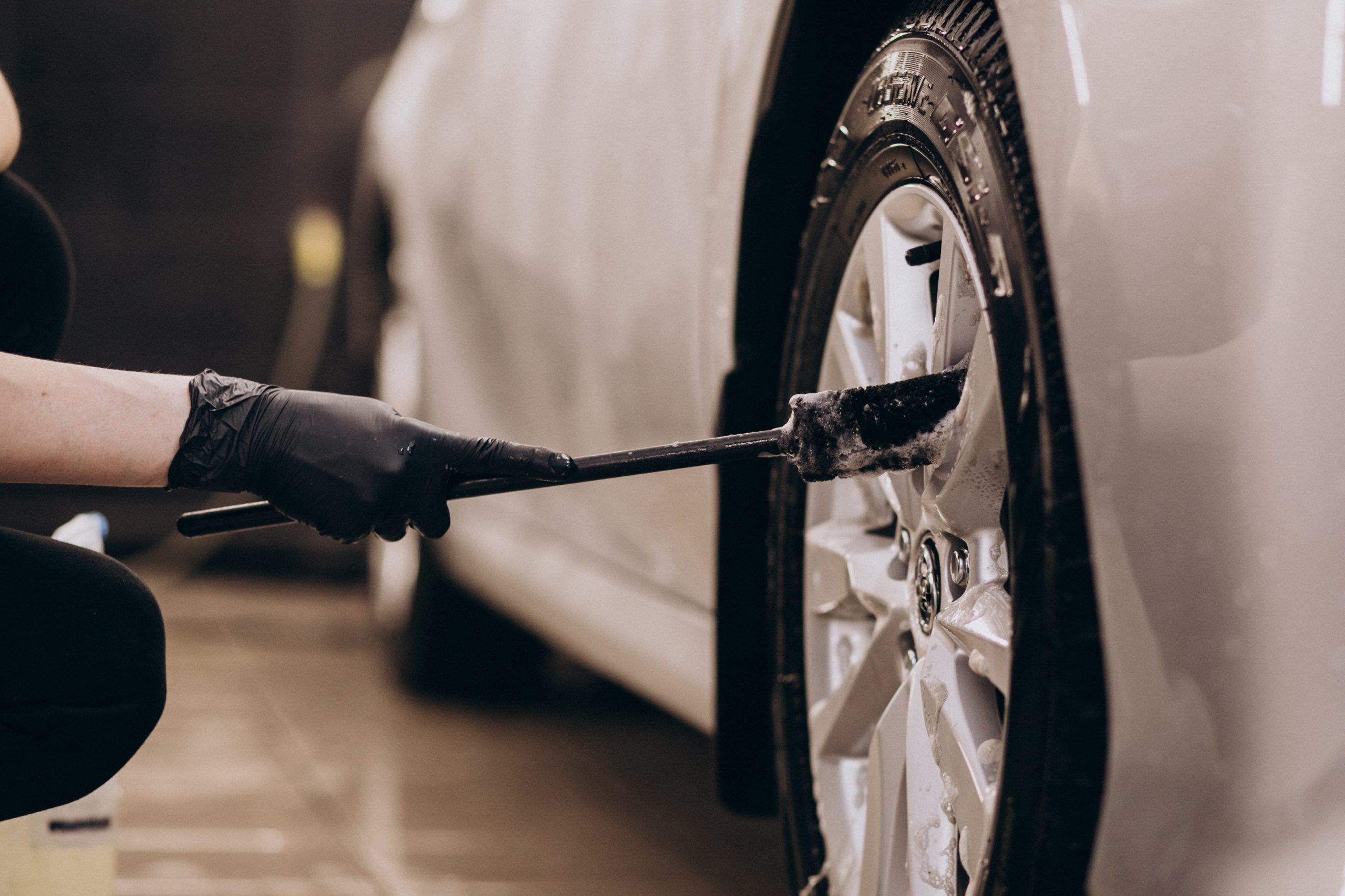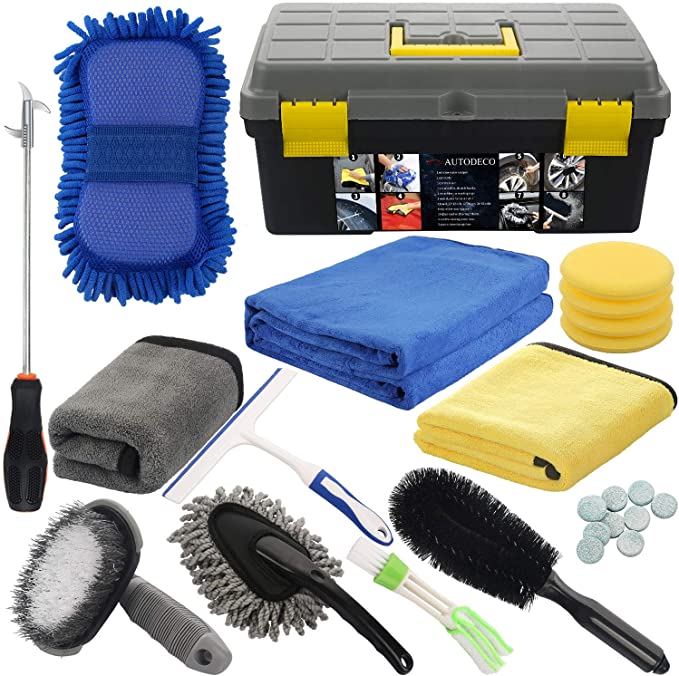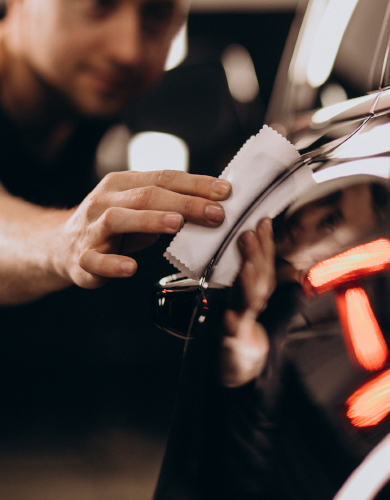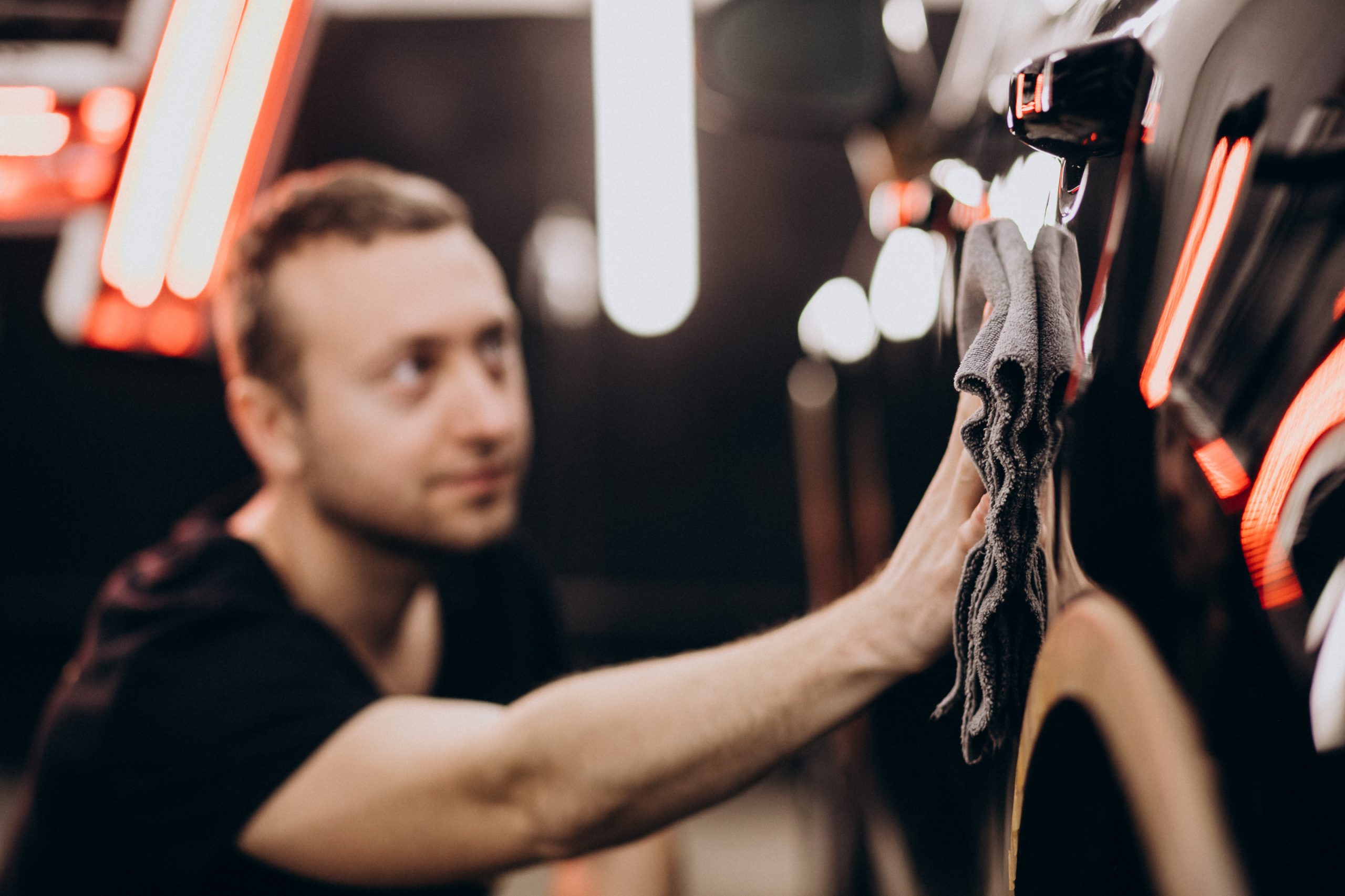Don’t… use household cleaning agents like hand soap, dishwashing detergent, or glass cleaner on the paint. These aren’t formulated for use on a car’s paint and may strip off the protective wax.
Do… use a dedicated car-wash product, which is milder and specifically designed for use on automotive paint. Apply the suds with a large, soft natural sponge or a lamb’s-wool mitt. (See our car wax report for tips and advice on all types of waxes.)
Grease, rubber, and road-tar deposits picked up from the road often accumulate around the wheel wells and along the lower edge of the body. These can be stubborn to remove and may require a stronger product, such as a bug-and-tar remover. Use a soft, nonabrasive cloth to remove these deposits, as they can quickly blacken your sponge.
Do… use a separate sponge to clean the wheels and tires, which may be coated with sand, brake dust, and other debris that could mar the car’s finish. Mild soap and water may work here; if not, a dedicated wheel cleaner may be required. Be sure the cleaner is compatible with the type of finish (paint, clear-coat, chrome, etc.) used on the wheels. A strong formula intended for mag wheels, for instance, can damage the clear coat that’s used on the wheels that come on today’s cars. To be on the safe side, choose a cleaner that’s labeled as safe for use on all wheels.
How Should I Dry the Car When I’m Done?
Don’t… let the car air dry, and don’t expect a drive around the block to do an effective job. Either will leave watermarks caused by minerals in hard water. In addition, don’t use an abrasive towel or other material that can leave hairline scratches in the paint.
Do… use a chamois (natural or synthetic) or soft terry towels. If you choose towels, you may need several. It’s best to blot the water up instead of dragging the towel or chamois over the paint. The drying process can be speeded up by using a soft squeegee to remove most of the water on the body, but be sure the rubber is pliable and that it doesn’t pick up bits of dirt that can cause scratches.



